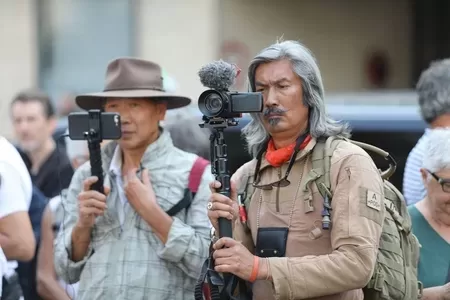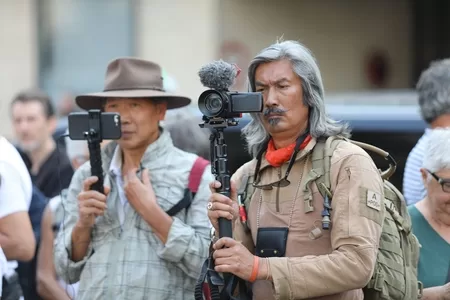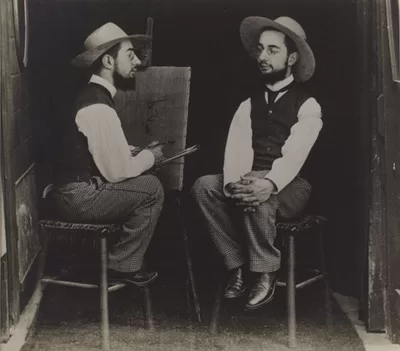Before coming to conclusions about the future of work in photography, the future depends on the individual and there is no shortage of young people giving it a go for a few years to see if it suits them. Photographers have a way of life that is not suited to many. Like any small business, photographers continue to make a living even though publishers and the internet don’t pay for photography.
Conclusion: Navigating the Future of Professional Photography
In the age of “Everyone’s a Photographer Now,” the future of work for professional photographers is marked by both challenges and opportunities. As we’ve explored in the preceding chapters, the democratization of photography has transformed the industry, reshaping traditional business models, redefining artistic expression, and revolutionizing the way images are created, consumed, and shared. As we conclude our exploration, let’s reflect on the implications of these changes and consider how professional photographers can adapt and thrive in the evolving landscape of the digital era.
Embracing Change: The rapid pace of technological advancement and the proliferation of digital media have reshaped the way professional photographers work. To succeed in this new landscape, photographers must embrace change, continually updating their skills, adopting new tools and techniques, and remaining adaptable in the face of shifting market dynamics.


Specialization and Differentiation: As the photography market becomes increasingly crowded, specialization and differentiation are key strategies for professional photographers looking to stand out. By carving out niches, developing expertise in specific genres or industries, and cultivating distinctive styles, photographers can attract clients seeking unique perspectives and high-quality craftsmanship.
Personal Branding and Online Presence: In an era where online visibility is paramount, personal branding has become essential for professional photographers. Building a strong online presence through social media, website portfolios, and blogging allows photographers to showcase their work, connect with audiences, and attract potential clients. Authenticity, consistency, and engagement are critical for building trust and credibility in the digital marketplace.
Networking and Collaboration: Networking and collaboration remain vital aspects of the photography industry, facilitating opportunities for growth, learning, and collaboration. By forging connections with fellow photographers, industry professionals, and potential clients, photographers can expand their opportunities, stay abreast of industry trends, and foster a sense of community in an increasingly fragmented landscape.
Adapting to New Business Models: The democratization of photography has led to the emergence of new business models and revenue streams for professional photographers. From licensing images and selling prints to offering specialized services like workshops, coaching, and photo editing, photographers must explore diverse income sources to sustain their livelihoods in an ever-changing marketplace.
Artistic Integrity and Creative Vision: Amidst the pressures of commercialization and commodification, maintaining artistic integrity and creative vision is paramount for professional photographers. While adapting to new technologies and market demands, photographers must stay true to their unique voice, storytelling style, and aesthetic sensibilities, ensuring the enduring value and authenticity of their work.
The Future of Photography: Looking ahead, the future of photography is both exciting and uncertain. As technology continues to evolve and societal attitudes toward visual media shift, the role of professional photographers in shaping cultural narratives and visual culture will remain essential. By embracing innovation, fostering collaboration, and staying true to their craft, professional photographers can navigate the complexities of the digital era and continue to create meaningful, impactful work in the years to come.
While the democratization of photography presents challenges for professional photographers, it also offers unprecedented opportunities for creativity, collaboration, and innovation. By adapting to the issues raised in these chapters and embracing the changing landscape of the online marketplace, photographers can position themselves for success in a dynamic and ever-evolving industry. As “Everyone’s a Photographer Now,” the future of professional photography lies in the hands of those who dare to embrace change, stay true to their vision, and push the boundaries of what’s possible in the art and craft of image-making.
Everyone is a Photographer Now
Chapter 1: The Evolution of Photography
Chapter 2: The Rise of Smartphone Photography
Chapter 3: Visual Literacy in the Digital Age
Chapter 4: The Democratization of Artistic Expression
Chapter 5: Professional Photography in the Digital Era
Chapter 6: Vertical integration of traditional media into social media
Conclusion: Navigating the Future of Professional Photography
Related stories
The Future of Work as a Media Worker
How Getty Images & Disruptors Changed Photography
Who owns photographs posted on social media
The Kiss in Times Square photograph by Alfred Eisenstaedt cancelled?
Andre Kertesz, a pioneer of street & fine art photography
Sarah Moon, French fashion photographer
Speos Magnum documentary & AFP photojournalism courses
John Bell re-enacts historic Hitler – Hoffman photo session
Dorothea Lange’s Pioneering Approach to Portraiture
The first photograph taken in Australia was by Captain Lucas
Guide to Collecting Vintage Film Cameras
Care to leave a comment below? Want to collaborate? After all, everyone’s a photographer now.







